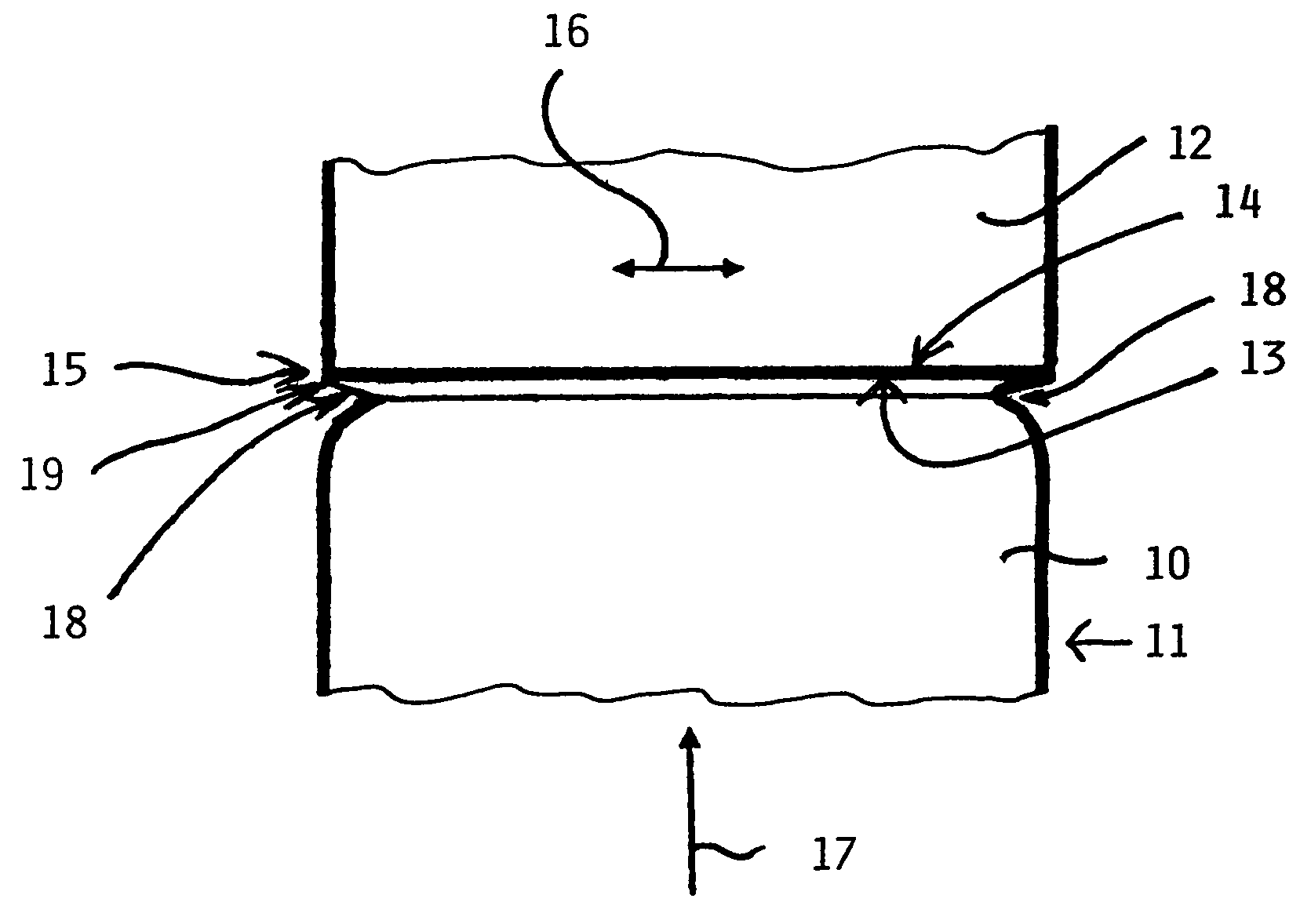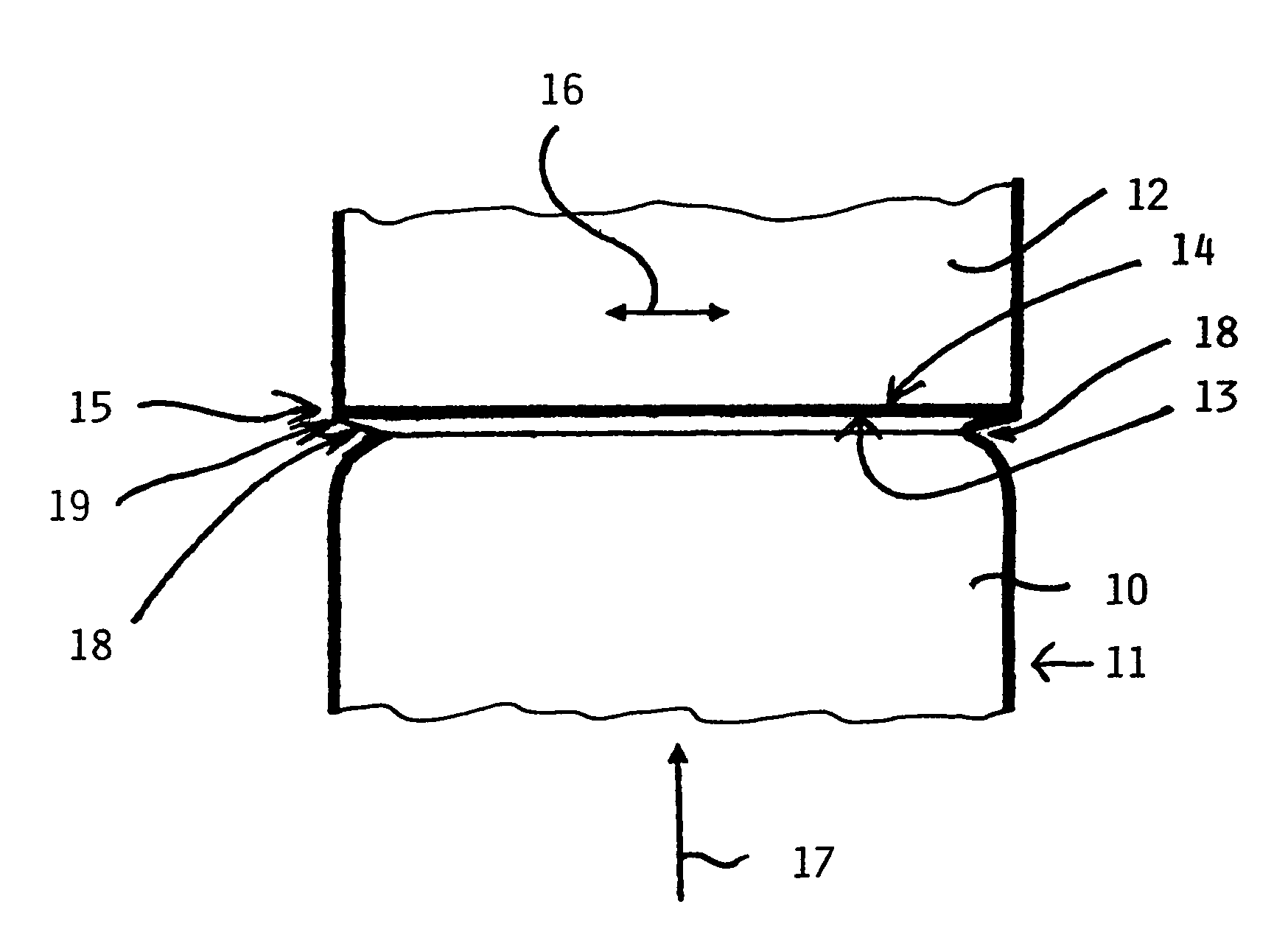Method for joining structural components
a structural component and structural technology, applied in the direction of auxillary welding devices, non-electric welding apparatus, auxillary devices, etc., can solve the problems of brittle phase, surface area, contamination of free non-overlapping surface areas, etc., and achieve the effect of improving the oscillation or vibration strength of the joining zon
- Summary
- Abstract
- Description
- Claims
- Application Information
AI Technical Summary
Benefits of technology
Problems solved by technology
Method used
Image
Examples
Embodiment Construction
[0020]The single FIGURE illustrates the method according to the invention for joining structural components with reference to the example of producing or repairing an integral bladed gas turbine rotor. As shown, the radially inner end of a rotor blade 12 is to be joined to a radially outwardly facing blade hump 10 of a rotor base body 11. The joining of the rotor blade 12 to the rotor blade hump 10 of the rotor base body 11 is accomplished by an oscillating friction welding especially a linear friction welding. Prior to the welding step, each of the two structural components is provided with a respective joining surface 13 and 14 respectively. When the joining surfaces are joined, a joining zone 15 is formed between the two components. Once the two joining surfaces 13 and 14 are formed and aligned with each other by aligning the rotor blade 12 relative to the blade hump 10, the joining takes place conventionally by an oscillating friction welding such as linear friction welding wher...
PUM
| Property | Measurement | Unit |
|---|---|---|
| perimeter | aaaaa | aaaaa |
| elastically soft | aaaaa | aaaaa |
| friction | aaaaa | aaaaa |
Abstract
Description
Claims
Application Information
 Login to View More
Login to View More - R&D
- Intellectual Property
- Life Sciences
- Materials
- Tech Scout
- Unparalleled Data Quality
- Higher Quality Content
- 60% Fewer Hallucinations
Browse by: Latest US Patents, China's latest patents, Technical Efficacy Thesaurus, Application Domain, Technology Topic, Popular Technical Reports.
© 2025 PatSnap. All rights reserved.Legal|Privacy policy|Modern Slavery Act Transparency Statement|Sitemap|About US| Contact US: help@patsnap.com


